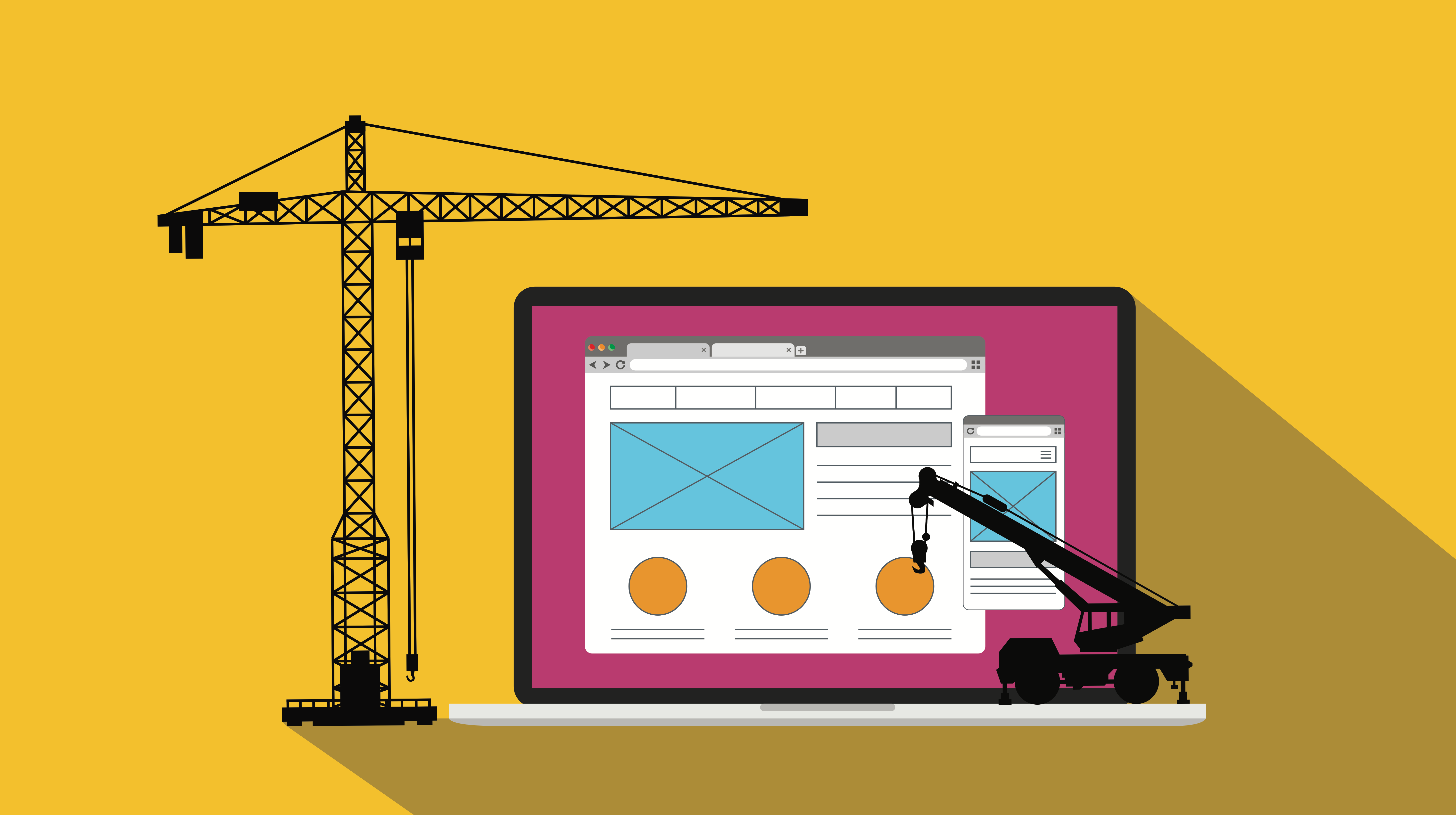A 10-Step Website Checklist to Get Your Business Online

Launching a new website can be daunting — the pressure to make sure it’s perfect the moment it goes live often leads to frustration and wasted time.
Instead of getting overwhelmed, treat your website like your business: constantly growing and changing based on how your customers respond.
While your website doesn’t have to be perfect the second you hit publish, it’s a good idea to follow a few guidelines to ensure you’re launching a site that’s secure, easy to use, and full of useful content.
Once you have a well-designed logo for your business, you already have a key component of your stunning new website. As you work toward publishing your site, review your progress using this simple website checklist for a professional, polished site that’s sure to grow and improve over time.
Step 1: Set a launch date
Choose your launch date then get to work! Keep yourself on track by telling people about your new website and when to expect it. Email your contact list and post about it on social media.
Once you have your domain, you can also publish a simple “coming soon” page to create anticipation before the launch.

Depending on the website platform you choose, it may take anywhere from a week to a couple of months to publish your site. Hold yourself to a tight yet realistic timeline to get your site up and running.
Step 2: Pick a website-building platform
A quick Google search will show that there are many options when choosing a website platform, so you’ll want to do some research to find the best one for your business, budget, technical skills, and website preferences.
There are two main website-building paths: Do-It-Yourself (DIY) and Do-It-For-Me (DIFM). DIY platforms offer the tools to let you customize your site, and are a good fit if you have the necessary time and expertise.

DIFM platforms offer both customization tools you can use and design experts who will work on your website for you. DIFM is a great option if you’re looking for professional results and support.
When choosing a path, you need to understand the costs involved with using a website platform. Some are free to use but offer little flexibility or functionality.
Others are costly and deliver outstanding results initially, but aren’t built for the regular updates that a growing business demands.
Compare the different capabilities of popular platforms to discern which ones you truly need. For example, is the availability of third-party integrations, customer support, and search engine optimization (SEO) relevant to your business?
Determine your website needs and the kind of budget you can invest in a platform then make your choice. Consider a platform like B12, which makes building high-quality websites a quick and affordable process with artificial intelligence and web experts.
Step 3: Choose your domain name
Your domain name is what appears in the web browser address bar when someone visits your website. A custom domain (e.g., www.yourbusiness.com) helps your business look reputable online.
Choose something that’s easy to spell and remember, not too long, and isn’t copyrighted or trademarked. In most cases, your domain name will be the name of your brand. Tip: It’s a good idea to avoid hyphens, numbers, and creative spellings.
For convenience, some website builders will purchase your domain for you. To register a domain yourself, GoDaddy is a great tool.
Step 4: Pick a host
You’ll also need to choose a host for your website, which may be different than the actual website-building platform you’re using (but not always).
The importance of this step is often overlooked, but it’s critical in maintaining your site. If you don’t have a reliable host, you’re vulnerable to periods where your site is unavailable.
Choosing the right host impacts things like uptime (the time your website is available to visitors), site speed, expansion, and flexibility.
Make sure the host you choose can handle your traffic today and in the future. Like domains, hosting may be included in your website platform’s plan (check to see!).
Step 5: Focus on user experience
The user experience, or UX, is one of the most critical parts of your website and relates to two main elements: navigation and design.
First, you need to understand that your site’s design and content shouldn’t just promote your brand, but should address your audience’s needs and pain points. Consider what they want to know and what areas are most interesting and relevant to them.
Each page of your website should focus on a problem and how you can help solve it for the customer. This directly influences the design of your site, including how much content you have, the images and videos you use, and the structure of the page.
The more you put yourself in the shoes of your customer, the more likely you are to create a UX that resonates with them.
Step 6: Aim for a consistent look and feel
If you have your brand’s logo, you already have a visual representation of your business that will help you choose your website’s color palette, font styles, and more.
Your site’s visual design should bring your brand’s value to life and appeal to visitors. Photos, graphics, and videos can enhance your website’s text, as well as communicate key messages on their own.
When you first launch your website, it’s best to keep the design clean and simple. Start with two fonts, three to four colors, and plenty of white space. For design inspiration, look at the websites of industry leaders and pick out some of the most effective visual elements.
And remember: Design trends will always come and go. Even if your website is considered classic now, you’ll need to update it regularly to keep up with industry standards and your audience’s expectations.
Step 7: Create compelling content
Along with designing a website with great UX, there’s the responsibility of crafting valuable content.
You want to write content based on how your audience talks and issues they face that you can help solve. This means leading with the benefits of your product or service rather than the features.
Your content also needs to be SEO friendly. Yes, you want to write for your audience first, but to reach those customers, you can’t ignore search engines. Without optimized content, no one’s going to find you through organic search.
When determining keywords, research terms that are relevant to your brand and audience that also have a high volume of searches. Pick a target keyword for each page, then work the keyword (and related keywords) into your content naturally.
Stuffing your website with keywords will make your content weaker and may cause search engines like Google to penalize you in their rankings. Shoot for three to four uses per 500 words.
Along with the actual content on a page, you also need to write metadata for page titles and descriptions. While your website’s metadata is mostly invisible to customers, it’s what search engines crawl to understand your content and rank your site in search results.
Depending on the website platform you’re using, you can manage your SEO efforts with a plug-in or monthly subscription to have your pages automatically optimized. Such plug-ins help keep your metadata organized and allow you to insert keywords in the right places.
Step 8: Perform usability testing
With navigation, design, and content in place, it’s time to see if your website is user-friendly. Usability testing is much more than just ensuring that the links work and the images appear correctly. It includes some crucial aspects like:
- How is the readability? Is the content scannable and does it have a hierarchy that’s shown through the use of headers and subheaders?
- Does the site render correctly in all the major browsers?
- How does the site look and behave on mobile? If your site isn’t mobile friendly, your SEO efforts don’t stand a chance.
- Does the user know which path to take to learn what they want to learn?

If you haven’t answered “yes” to the above questions, you can keep improving these aspects and continue testing with tools like Hotjar, Crazy Egg, or UserTesting.
Step 9: Keep your site secure
One of the most critical elements of your website is security. Your site needs HTTPS and an SSL certificate, even if it doesn’t process payment or other sensitive information.
You’ve probably noticed “HTTPS” or “HTTP” at the beginning of web addresses. HTTPS (Hypertext Transfer Protocol Secure) encrypts the connection between a visitor’s browser (e.g., Google Chrome) and your site. HTTPS is — you guessed it — the secure version of HTTP.

With an HTTPS site, only the visitor and the web server can see their data, which is where an SSL certificate comes in. An SSL certificate is responsible for that lock you see in the address bar and is what HTTPS uses to establish a secure connection between the server and browser.
You can often purchase an SSL certificate through your website builder. While you’re thinking about security, also be aware that websites can be swarmed with spam in comments sections or contact forms. Use a plug-in (many are free!) to help combat this annoyance.
Step 10: Sign up for Google Analytics
If you want to know who’s visiting your site, along with hundreds of other metrics, you’ll need to set your site up with a Google Analytics code. This tracking code should be added to the site and will be in the HTML of every page.

Once your site launches, you can track page views, referring websites, time spent on pages, and more. Website analytics are crucial to the success of your online presence, and it’s free to set up a Google Analytics account.
Time to publish!
After you’ve checked these items off your website checklist, it’s time to publish! Test the links, proofread the text, make sure the formatting is consistent, then launch your website.
Once your site is live, you’ll be able to measure how effective it is. When you have data, you can see which pages are successfully engaging visitors and which ones might need some work.
Launching a new website takes time and forces you to make a lot of decisions about your business. But it also helps you get clearer and more excited about what you’re doing — so don’t delay it!

